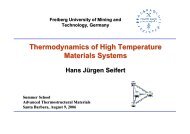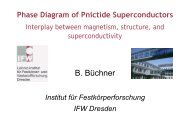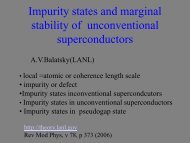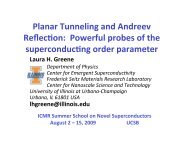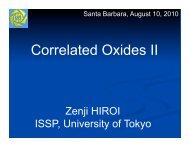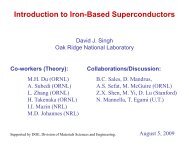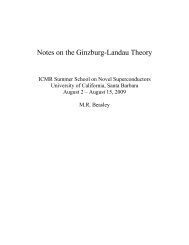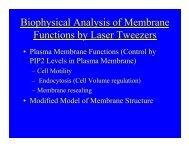Effects of high pressure, magnetic fields, and substitutions - ICMR ...
Effects of high pressure, magnetic fields, and substitutions - ICMR ...
Effects of high pressure, magnetic fields, and substitutions - ICMR ...
You also want an ePaper? Increase the reach of your titles
YUMPU automatically turns print PDFs into web optimized ePapers that Google loves.
Chapon et al. (PRL 2006) explained the sign change <strong>of</strong> P at T C2 with a change <strong>of</strong> phase angle φ<br />
between the <strong>magnetic</strong> orders <strong>of</strong> adjacent chains<br />
Magnetic structure changes at T C2 :<br />
(i) The relative angle between spin vectors <strong>of</strong><br />
neighboring chains increases from ~ 0 to 40°<br />
reducing the <strong>magnetic</strong> coupling between them<br />
(ii) The phase <strong>of</strong> the <strong>magnetic</strong> modulation<br />
between adjacent chains increases, reducing<br />
<strong>and</strong> eventually reversing the polarization<br />
(iii) The CM <strong>magnetic</strong> order unlocks <strong>and</strong> becomes<br />
incommensurate again<br />
The observed <strong>pressure</strong> effects can<br />
now be understood as:<br />
Decreasing the phase difference <strong>of</strong> <strong>magnetic</strong><br />
modulation <strong>of</strong> adjacent chains → reversal <strong>of</strong> FE<br />
polarization at 10 kbar<br />
Transition from the ICM to the CM phase at<br />
<strong>high</strong>er <strong>pressure</strong>



